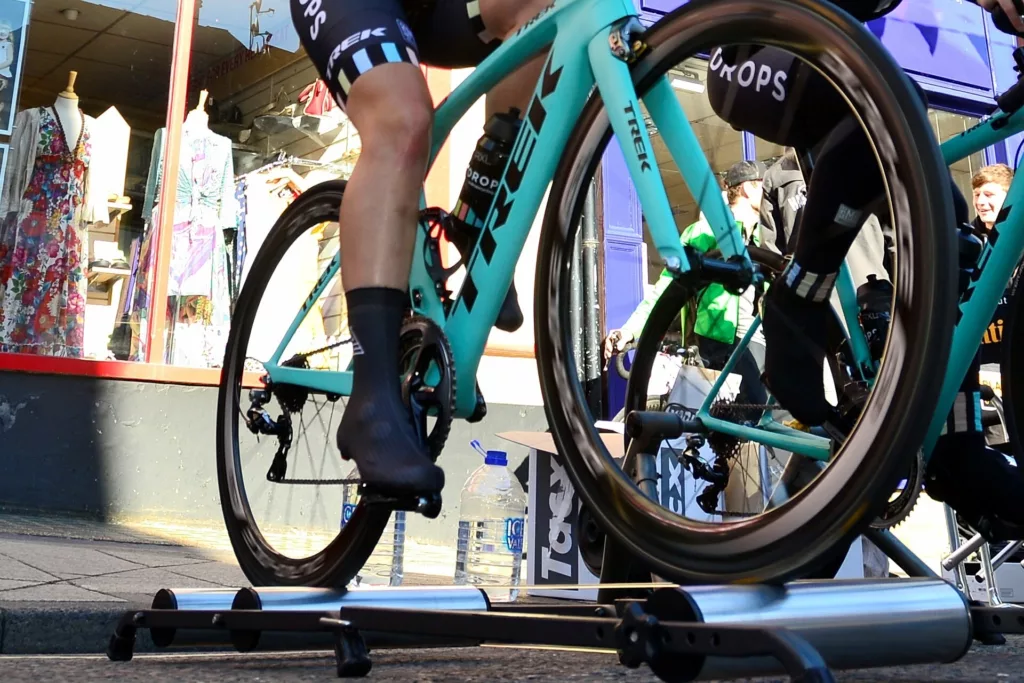In the world of cycling, continuous training and practice are crucial for maintaining performance levels and improving skills. However, the unpredictable elements of weather, limited daylight during winter, or simply the convenience of indoor training often push cyclists to seek effective indoor alternatives. Typically, this is where turbo trainers come into play, but there’s another fantastic option that’s gaining popularity: roller training.
Table of Contents
ToggleUnderstanding Roller Training
At first glance, roller trainers may seem like a piece of old-school training equipment. However, they’ve stood the test of time, and for good reasons. A roller trainer consists of a set of cylindrical drums mounted on a frame. The bike sits freely atop these drums, and as you pedal, the drums rotate to simulate the feeling of cycling on a smooth, flat road.
Unlike a turbo trainer where the bike is clamped into the device, with roller training, there are no stabilisers; balance and control are up to the cyclist. This free-riding aspect offers unique advantages and challenges that make roller training a worthy contender in the realm of indoor cycling training.
A basic set will set you back about £60, whereas you can also get a decent Tacx Antares rollers for around £165 as well.
The Benefits of Roller Training
1. Improved Balance and Bike Handling
One of the significant advantages roller training has over turbo trainers is the emphasis on balance and bike handling. Since your bike isn’t held firmly in place, you need to maintain your balance while riding, which mimics real-world cycling conditions much more accurately.
2. Better Pedalling Efficiency
Roller training promotes a smooth, round pedal stroke. Any unevenness or ‘dead spots’ in your pedalling will disrupt your balance, providing immediate feedback. This helps in developing a more efficient pedal stroke, which can lead to better overall cycling performance.
3. Lower Risk of Bike Damage
With a turbo trainer, there’s always a small risk of damaging the bike, particularly the rear dropouts, because of the way the bike is clamped into the device. With rollers, the bike sits freely on top, which reduces this risk and is generally less stressful on the bike frame.
4. More Engaging Workouts
Workouts on rollers can be more engaging than those on a turbo trainer. The need to maintain balance and steer the bike makes for a more interactive and challenging experience.
Roller Training: Alternative to Turbo Trainers
While turbo trainers certainly have their place in indoor cycling training, it’s worth considering roller trainers for their unique benefits. They offer an engaging way to hone your cycling skills while improving your balance, pedalling efficiency, and bike handling.
Keep in mind that mastering a roller trainer can take a bit of time and patience, but once you’ve got the hang of it, it can add a new and exciting dimension to your indoor training regimen. It’s about keeping the training challenging and fun, and the roller trainer does just that. Whether you’re a competitive racer or a cycling enthusiast, consider giving roller training a go and discover the benefits it could bring to your cycling experience.






